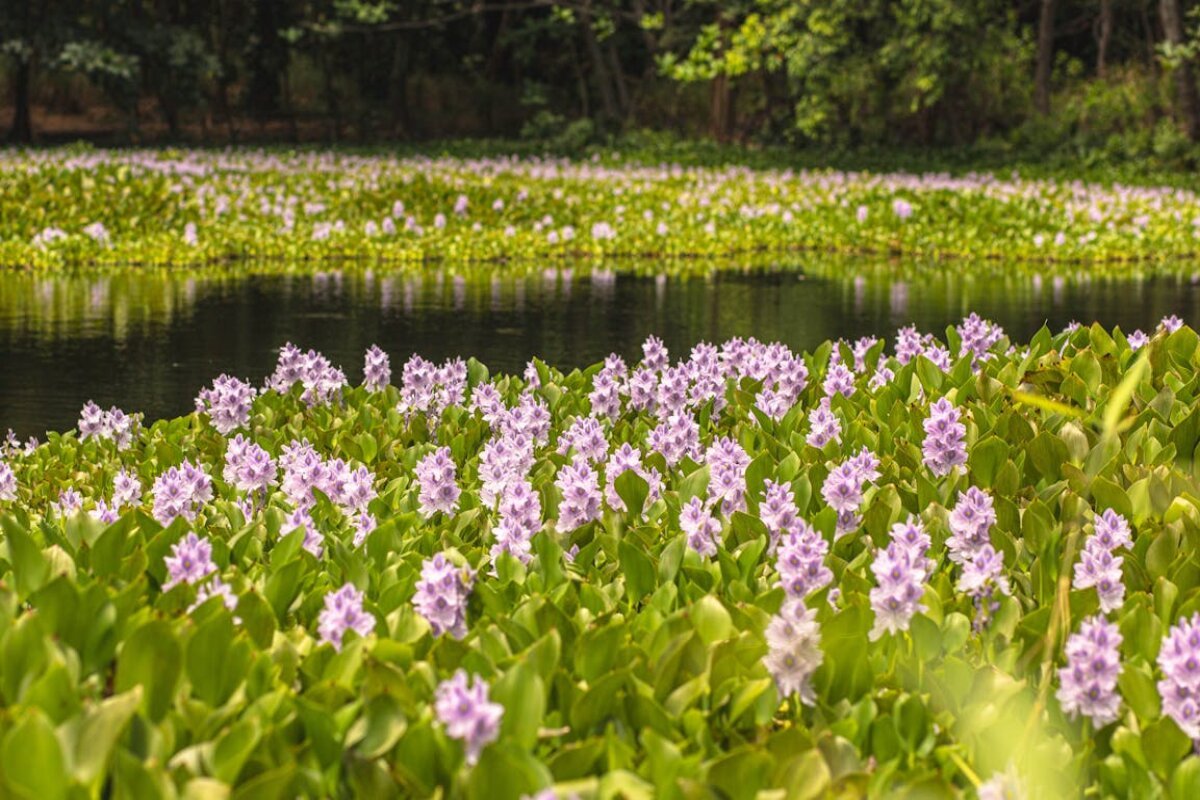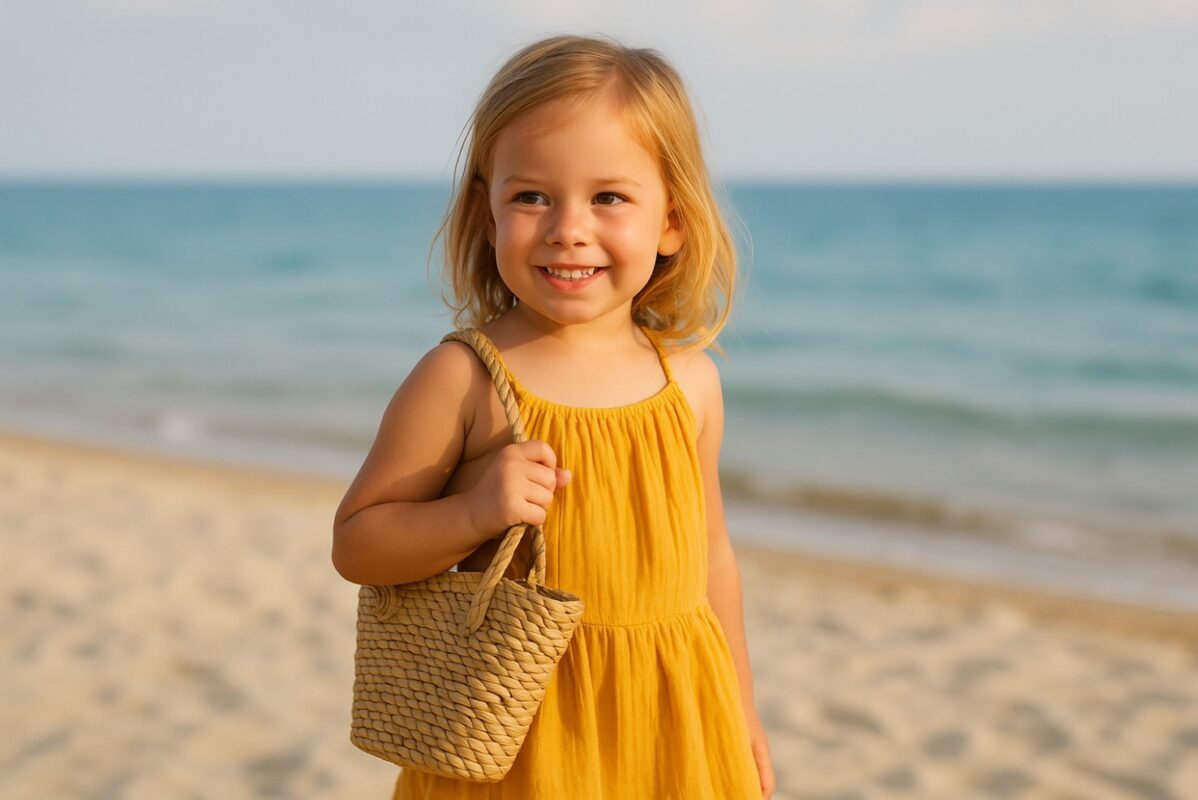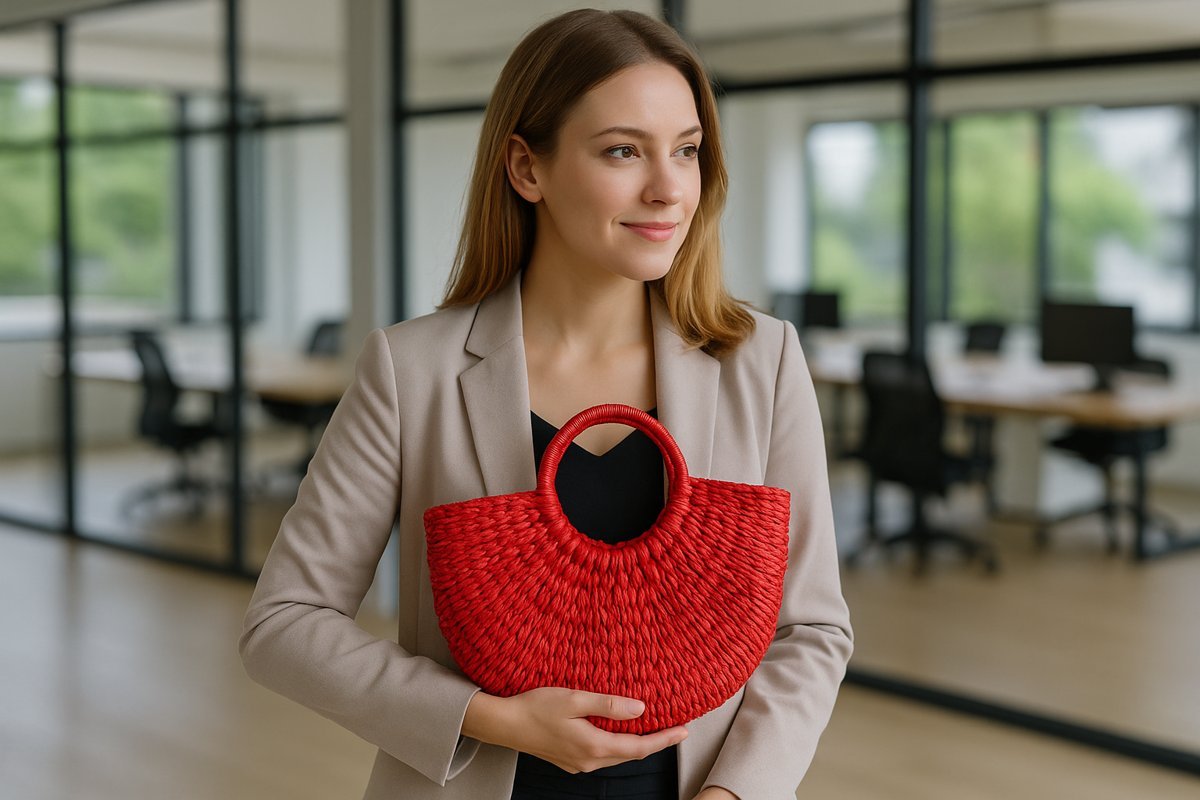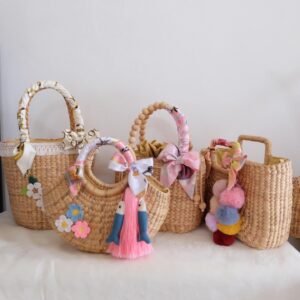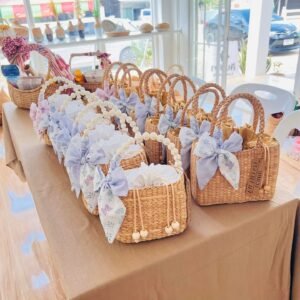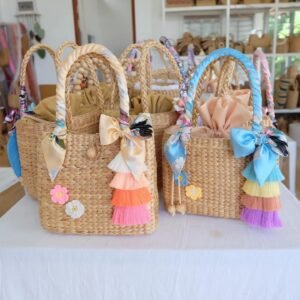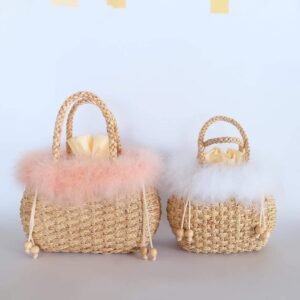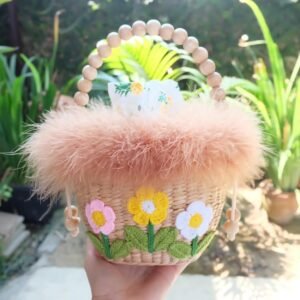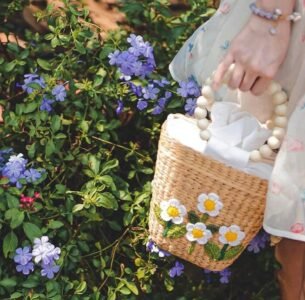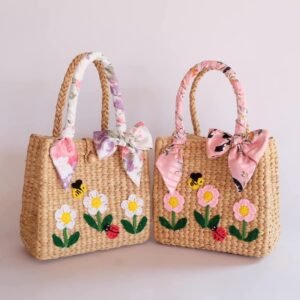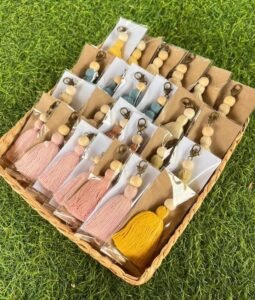Embracing Water Hyacinth Plants and Sustainable Straw for Fashionable Bags
Introduction
As sustainability becomes a cornerstone of modern fashion, materials once overlooked are stepping into the spotlight. One such marvel is the water hyacinth plant—a fast-growing aquatic species now celebrated for its environmental potential and creative use in crafting eco-friendly straw bags.
Long seen as a nuisance due to its rapid spread in waterways, the water hyacinth is experiencing a remarkable transformation. Its fibrous stems can be dried, processed, and woven into durable, beautiful materials—turning an ecological problem into a sustainable fashion solution. In this journey, we’ll explore how the plant’s lifecycle supports responsible fashion and how its use is helping communities and ecosystems thrive.
Water hyacinth bags aren’t just accessories. They represent innovation, ethical production, and a fresh approach to material sourcing. From root to runway, they reflect the future of fashion.
Overview of Water Hyacinth Plants
With their soft green leaves and delicate purple blooms, water hyacinths are attractive but invasive in many parts of Southeast Asia. These floating plants flourish in warm, nutrient-rich waters and spread rapidly—often overwhelming ponds, lakes, and rivers. Despite their reputation as environmental threats, they uniquely purify water and support aquatic life.
Their dense mats help stabilise ecosystems, reduce erosion, and even absorb heavy metals from polluted water sources. When managed correctly, these benefits make them a valuable natural resource. Their stems, particularly, are fibrous and strong—ideal for weaving into bags and baskets.
This natural abundance and structure make water hyacinth straw a smart, sustainable material for fashion products. It’s a prime example of circular thinking: turning an environmental issue into a renewable solution.
The Importance of Water Hyacinth in Sustainable Fashion
The fashion industry has long been criticised for its reliance on resource-heavy materials and wasteful practices. Enter the water hyacinth—an abundant, biodegradable, low-impact material with real environmental value.
Transforming this invasive plant into a sustainable material addresses multiple ecological challenges simultaneously. It helps clear clogged waterways, promotes biodiversity, and provides raw materials without intensive farming. And critically creates economic opportunities for the communities that harvest and process it.
Many rural areas rely on the weaving and crafting of water hyacinth bags as a source of income, particularly for women. This work supports fair trade, preserves local craftsmanship, and empowers families with sustainable livelihoods.
Water hyacinths align with ethical production standards, as the material requires minimal chemical processing and energy consumption. The process is rooted in environmental responsibility and social impact, from sourcing to stitching.
Using Water Hyacinth for Straw Bags: Environmental Benefits
Choosing water hyacinth straw bags over synthetic alternatives brings many ecological advantages. These bags are fashionable and serve a functional role in supporting climate-conscious practices.
Harvesting water hyacinths helps restore oxygen levels in infested waterways. It improves water quality, supports fish populations, and restores balance in delicate aquatic ecosystems. By removing the excess biomass, the process actively contributes to ecological restoration.
On land, the production of these bags avoids the heavy resource use seen in plastic or leather manufacturing. No toxic dyes, petrochemical inputs, or extensive machinery are needed. The bags are handmade, sun-dried, and woven using traditional, low-energy techniques.
Crucially, water hyacinth straw is fully biodegradable. Once a bag reaches the end of its life, it breaks down naturally—leaving no harmful microplastics or residues. This contributes to a fashion industry that reduces waste and prioritises the life cycle of its products.
Challenges and Solutions in Sustainable Production
While using water hyacinth offers numerous benefits, the journey isn’t without challenges. These include maintaining a consistent raw material supply, navigating seasonal variations, and ensuring ethical practices throughout the supply chain.
Seasonal harvesting can affect availability, especially during drier months. Water levels, climate, and local environmental factors all influence growth. To address this, some producers invest in small-scale aquatic farming and better storage systems to ensure year-round supply.
Transport and logistics are another issue. Most water hyacinth bags are handmade in rural areas, so getting products to global markets can increase carbon emissions. One solution is to localise production and sales wherever possible, reducing transport and empowering local businesses.
Fair labour practices are also essential. As demand grows, brands must ensure workers are fairly paid and work in safe, supportive environments. Transparent sourcing, independent certification, and community partnerships help address this.
Despite the hurdles, the sector continues to innovate—proving that fashion can be ethical and eco-efficient.
Future Innovations and Broader Potential
The future of water hyacinth straw in fashion is full of possibilities. With advances in material science, we’re seeing the development of new techniques that can make water hyacinth fibres even more versatile.
These innovations, from 3D weaving to biodegradable waterproof coatings, could make straw bags more durable, functional, and adaptable to everyday life. Designers are also exploring water hyacinth as a base material for shoes, hats, home goods, and packaging.
Sustainable dyes and finishes are also being introduced, reducing reliance on chemical processes and ensuring products stay as eco-friendly as their materials. The ability to scale these innovations will determine how widespread water hyacinth use becomes in the coming years.
As consumer awareness grows, so does the demand for fashion that doesn’t compromise the planet. And water hyacinth, with its unique mix of ecological benefit, beauty, and functionality, is perfectly positioned to help meet that demand.
Conclusion
Water hyacinths are more than just floating plants—they symbolise fashion’s potential to reinvent, renew, and reduce harm. When woven into sustainable straw bags, they tell a story of transformation: from invasive species to everyday accessories, from environmental problems to ethical solutions.
The success of water hyacinth as a fashion material is a testament to creative thinking and conscious design. It combines ecological responsibility, cultural heritage, and modern aesthetics in one durable, desirable product.
As the fashion industry continues to evolve, the future will belong to materials and practices that serve both people and the planet. By supporting eco-friendly straw bags made from water hyacinth, you’re not just making a stylish choice—you’re part of a global movement rethinking how fashion can function.
Carry it well. Carry it consciously.


